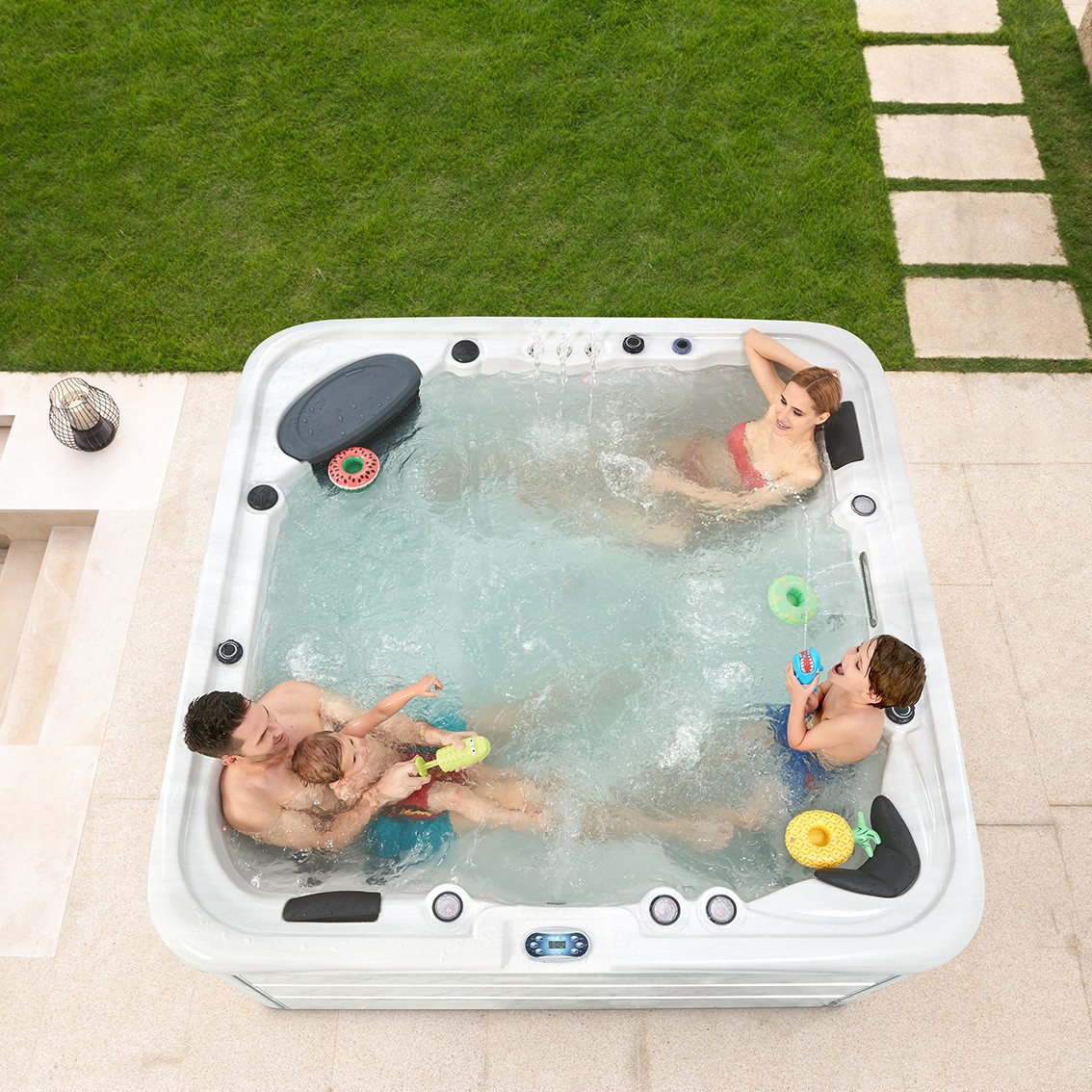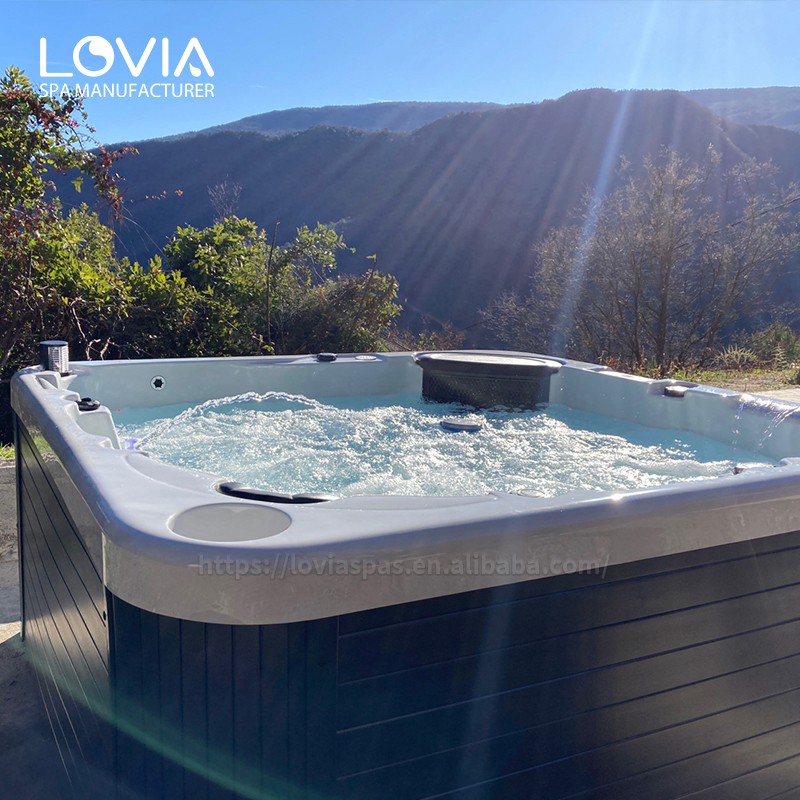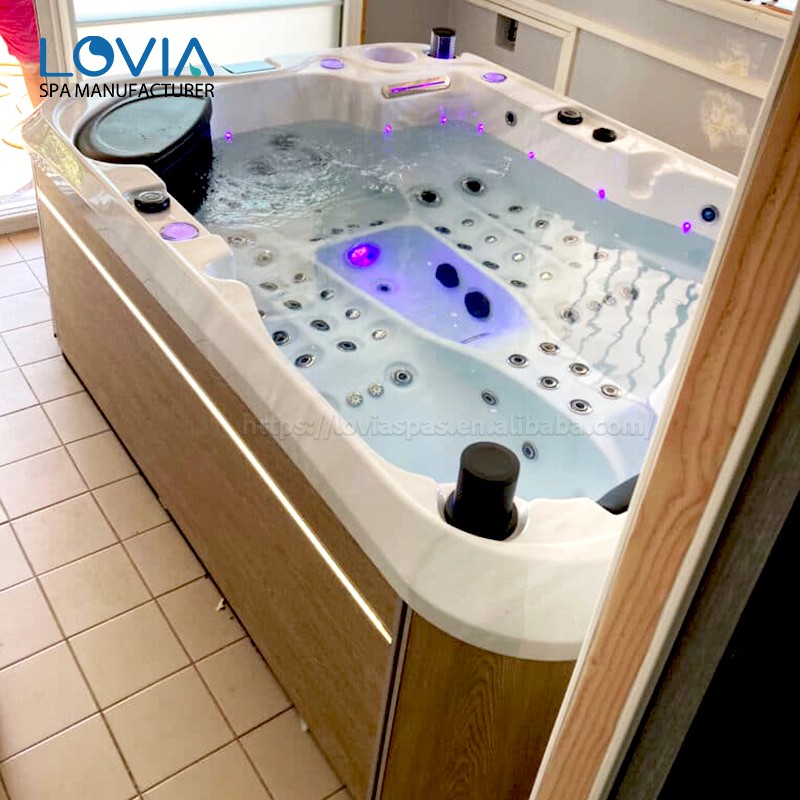
Avoid Working Out With Sore Muscles: A Hot Tub is a Great Recovery Tool
2024-09-12 15:30Muscle soreness, especially after strenuous exercise, is a common condition for many people. Whether you are a fitness novice or an experienced athlete, the soreness you feel after a workout (Delayed Onset Muscle Soreness, DOMS) is common. This soreness, while a sign that your muscles are repairing and growing, can interfere with subsequent workouts and daily activities. In this case, a hot tub can be an effective recovery tool to help reduce muscle soreness and speed up the recovery process.

Why Do I Feel Sore Muscles After a Workout (DOMS)?
Muscle soreness, especially delayed onset muscle soreness after a workout, usually occurs within 24 to 48 hours after a workout. This soreness is caused by tiny tears in muscle fibers, especially when performing high-intensity or unusual exercises. Micro-damage occurs when muscles adapt to new exercise intensity and patterns, and this damage triggers an inflammatory response that causes muscle soreness.
DOMS is a natural part of the muscle adaptation process. While this soreness can be uncomfortable, it is also part of the muscle strengthening and adapting to new stresses. However, excessive soreness can limit subsequent workouts and daily activities, so it is vital to find an effective way to recover.
Hot Tub Soaking Can Help You Avoid Exercising With Sore Muscles
A hot tub soak is a simple and effective way to help reduce muscle soreness and speed up recovery after a workout. When muscles are immersed in hot water, the heat promotes blood circulation, which speeds up the repair process of muscle tissue. In addition, hot water can help relax tight muscles and reduce stiffness caused by soreness.
For those who have difficulty continuing to exercise due to muscle soreness, a hot tub soak can provide a relaxing way to recover while relieving soreness. By soaking in a hot tub for 15 to 20 minutes, you can effectively reduce muscle discomfort and prepare for the next workout.

Hot Water Promotes the Movement of Muscle Repair Metabolites
When muscles are damaged, some metabolites are produced in the body, such as lactic acid. These metabolites, if retained in the muscles, can lead to increased soreness. The heat of a hot tub promotes blood circulation, which speeds up the removal of these metabolites and helps muscles recover faster.
The temperature of hot water causes blood vessels to dilate, which increases blood flow to the damaged muscle area. This not only helps to remove lactic acid and other metabolic waste products, but also provides more oxygen and nutrients to the muscles, further promoting muscle repair and regeneration. Therefore, hot tubs not only relieve pain, but also speed up recovery by accelerating the removal of metabolites and the replenishment of nutrients.
How Jet Massage Helps Temporarily Relieve Joint and Muscle Pain
The jet massage function of a hot tub is another key factor that can help relieve muscle and joint pain. These jets are able to apply gentle pressure to specific areas of the body, providing a massage-like effect. The pressure of the jets can help loosen tight muscles and relieve soreness caused by exercise or other activities.
Jet massage can also stimulate the release of endorphins, the body's natural pain relief mechanism. Endorphins are chemicals secreted by the brain that can produce pain-relieving and euphoric effects. When the hot tub's jets act on the muscles, the release of endorphins can help further relieve pain and provide a feeling of relaxation.

Is Using a Hot Tub Considered Exercise?
Using a hot tub is not considered a typical aerobic or anaerobic exercise in itself. However, hot tubs can provide a low-impact form of activity for the body, especially for those who are unable to perform high-intensity exercises due to muscle soreness or joint problems. Light stretching or water exercises in a hot tub can help maintain muscle flexibility and joint mobility.
In addition, the water pressure of a hot tub can provide a gentle resistance to the muscles, helping to perform mild muscle exercises. While these activities cannot replace regular exercise, they can be a recovery supplement to help the body stay active during soreness or injury.
Is Using a Hot Tub Aerobic or Anaerobic Exercise?
Activities performed in a hot tub are generally considered low-intensity anaerobic exercise. Due to the buoyancy of the water, the body's movement in water does not produce as much energy expenditure as on land, so it does not achieve the effects of aerobic exercise. However, the water pressure and temperature in a hot tub can help relax muscles, reduce pain, and prepare for subsequent exercise.
While activities in a hot tub cannot replace high-intensity aerobic or anaerobic training, they can be an effective recovery method to help relieve muscle soreness, reduce stiffness, and improve overall body comfort.
Why Does Massage Help Relieve Muscle Fatigue After DOMS?
Massage is an effective way to help relieve muscle fatigue caused by DOMS. When muscles are massaged, the massage action can promote blood flow to muscle tissue, speed up the removal of metabolic waste, and provide more oxygen and nutrients to the muscles.
The jet massage function of a hot tub can mimic the effects of a traditional massage, acting on the muscles through the pressure of the water flow, helping to relieve tightness and pain. In addition, massage can stimulate the release of endorphins, further reducing pain and providing the body with a sense of relaxation. Therefore, jet massage after DOMS occurs can effectively relieve muscle fatigue and help muscles recover faster.
How Long Does it Take to Use a Hot Tub for it to be Effective?
The length of time you use a hot tub depends on your personal needs and physical condition. Generally speaking, soaking in a hot tub for 15 to 30 minutes each time can produce obvious results. This time is enough for the muscles to fully relax, promote blood circulation, and help relieve soreness.
However, soaking for too long may cause dehydration or other discomfort symptoms. Therefore, it is recommended to get up and rest every 15 minutes when soaking in a hot tub, and drink some water to maintain the balance of water in the body. Depending on your personal recovery needs, you can use a hot tub 1 to 2 times a day to help relieve muscle soreness and speed up recovery.

Can Hot Tubs Burn Calories?
While using a hot tub won’t burn as many calories as aerobic exercise, it can still help burn a small amount of calories. The high temperatures in a hot tub can increase the body’s basal metabolic rate, causing the body to burn more calories than it would otherwise. Each soak can burn between 50 and 100 calories, depending on the water temperature and soaking time.
In addition, light water activities in a hot tub, such as stretching or water walking, can also help burn additional calories. While these activities are no replacement for regular exercise, they can serve as an additional way to burn calories and help maintain a healthy weight.
Conclusion
As a recovery tool, hot tubs can effectively help reduce muscle soreness and speed up the recovery process. Whether it’s the warmth of the hot water that boosts blood circulation or the jet massage that soothes tight muscles, hot tubs offer a comfortable and effective way for people to recover after a workout. However, hot tubs need to be used wisely and combined with appropriate exercise and rest to maximize their recovery effects.
